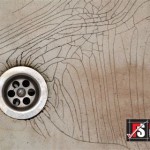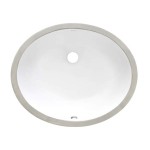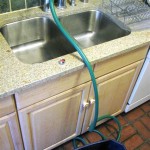Ants In The Kitchen Sink: Causes, Prevention, and Control
The presence of ants in a kitchen sink is a common household problem, often causing frustration and concern for homeowners. While these small insects may seem like a minor nuisance, their appearance indicates a potential food source nearby and can quickly escalate into a significant infestation. Understanding the reasons behind ant infestations in kitchen sinks, implementing preventative measures, and knowing effective control methods are crucial for maintaining a clean and pest-free home environment.
The kitchen sink, with its readily available water and food residue, provides an ideal environment for ants to thrive. Water is essential for ant survival, and the sink’s dampness satisfies this need. Furthermore, crumbs, grease, and sugary spills that accumulate in and around the sink offer a tempting food source. Scout ants, tasked with finding food for the colony, are particularly drawn to these areas. Once a scout ant discovers a viable food source, it leaves a pheromone trail, attracting other ants from the colony to the location. This process explains why a few ants can quickly multiply into a large number in a short period.
The type of ants frequently found in kitchen sinks often include common household varieties such as sugar ants, also known as Argentine ants, and pavement ants. Sugar ants are notorious for their attraction to sweet substances, while pavement ants are more opportunistic, feeding on a variety of food sources including grease and crumbs. Identifying the specific type of ant is not always necessary for implementing general control measures, but it can be helpful in targeting specific baits or treatments if the infestation persists.
Identifying the Source of the Infestation
Locating the source of an ant infestation is the first step toward effective control. Observing the ants’ behavior and tracing their path can often lead to their entry point. Ants may enter the kitchen through cracks in walls or floors, gaps around pipes, or openings in windows and doors. Inspecting these areas thoroughly and sealing any potential entry points is crucial in preventing future infestations. Furthermore, examining areas around the kitchen sink, such as underneath cabinets and behind appliances, can reveal hidden food sources or nesting sites. Addressing these hidden sources is essential in eliminating the ant problem completely.
The proximity of the kitchen sink to outdoor environments also plays a role in ant infestations. Ants often build nests in yards, gardens, and other outdoor areas, and they may venture indoors in search of food and water. Overhanging tree branches or shrubs that touch the house can provide a bridge for ants to access the kitchen. Trimming these branches and maintaining a clear space around the house can help reduce the likelihood of ants entering the kitchen through these pathways.
Regular cleaning and maintenance practices within the kitchen are paramount in preventing ant infestations. Food debris, spills, and standing water create attractive conditions for ants. Wiping down countertops, sweeping floors, and cleaning up spills immediately will eliminate potential food sources. In addition, ensuring that the sink drain is clean and free of food particles will further reduce the appeal of the area to ants. Covering garbage cans and properly storing food in airtight containers also contributes to a less attractive kitchen environment for ants.
Preventative Measures for a Pest-Free Kitchen
Implementing preventative measures is the long-term solution to keeping ants out of the kitchen sink. These measures focus on eliminating food and water sources, sealing entry points, and maintaining a clean and sanitary environment. A proactive approach will significantly reduce the likelihood of an ant infestation and create a more pleasant and hygienic home.
One of the most effective preventative measures is to eliminate access to food and water. This involves diligent cleaning practices, proper food storage, and addressing any plumbing leaks. Regularly wiping down kitchen surfaces with a disinfectant cleaner removes food residue and disrupts pheromone trails left by ants. Storing food in airtight containers prevents ants from accessing it and eliminates potential food sources. Addressing leaky faucets or pipes promptly will eliminate standing water and reduce the attraction of the kitchen sink to ants. Addressing moisture issues under the sink is crucial, as this damp environment provides an ideal breeding ground.
Sealing potential entry points is another critical aspect of ant prevention. Inspecting the kitchen for cracks, gaps, and openings and sealing them with caulk or sealant will prevent ants from entering the kitchen from outside. Pay particular attention to areas around pipes, windows, and doors. Weatherstripping and door sweeps can also be used to seal gaps around doors and windows, further preventing ant entry. Fine mesh screens on windows and vents will prevent ants from entering through these openings while still allowing for ventilation.
Maintaining a clean and sanitary kitchen environment is essential in deterring ants. Regular cleaning practices, such as sweeping floors, washing dishes, and taking out the trash, will eliminate potential food sources and create a less attractive environment for ants. Keeping the sink drain clean and free of food particles is also crucial. Pouring boiling water down the drain periodically or using a drain cleaner will help prevent the buildup of food residue and eliminate potential breeding grounds for ants. Proper waste disposal is also essential; ensure that garbage cans are tightly sealed and emptied regularly.
Effective Control Methods for Ant Infestations
If preventative measures are not sufficient to eliminate an ant infestation, various control methods can be employed. These methods range from simple household remedies to professional pest control services. The choice of control method depends on the severity of the infestation and the preferences of the homeowner.
One of the most common and effective control methods is the use of ant baits. Ant baits contain a slow-acting insecticide mixed with a food attractant. Worker ants are attracted to the bait and carry it back to the colony, where it is shared with other ants, including the queen. This slow-acting insecticide allows the ants to distribute the poison throughout the colony, eventually eliminating the entire infestation. Ant baits are available in various forms, including liquid baits, gel baits, and bait stations. Placing ant baits strategically near ant trails or entry points will maximize their effectiveness.
Another control method involves the use of insecticides. Insecticides are available in various forms, including sprays, dusts, and granules. These can be applied directly to ant trails, entry points, and nesting sites. However, insecticides should be used with caution, as they can be harmful to humans and pets. It is essential to read and follow all label instructions carefully when using insecticides. When using spray insecticides, proper ventilation is crucial, and direct contact with skin and eyes should be avoided.
Household remedies can also be used to control ant infestations. Vinegar, lemon juice, and peppermint oil are natural repellents that can deter ants. Spraying these substances along ant trails or entry points can help disrupt their pheromone trails and prevent them from returning. Borax, a common household cleaning agent, can also be used as an ant bait. Mixing borax with sugar or corn syrup creates a bait that attracts ants and slowly poisons them. Diatomaceous earth, a naturally occurring powder, can also be used as an insecticide. It works by absorbing the waxy coating on ants' exoskeletons, causing them to dehydrate and die. Diatomaceous earth is safe for humans and pets when used as directed.
In severe cases of ant infestation, professional pest control services may be necessary. Pest control professionals have the knowledge, experience, and equipment to effectively eliminate ant infestations and prevent them from recurring. They can identify the type of ant, locate the nesting site, and apply targeted treatments that are safe and effective. Pest control professionals can also provide advice on preventative measures to keep ants out of the kitchen in the future.

Why Do I Keep Seeing Very Tiny Ants Around My Kitchen Sink

Are Ants Drawn To The Kitchen Sink Green Pest Solutions

11 Ways To Get Rid Of Ants In The Kitchen White Glove Cleaner

How To Get Rid Of Ants In The Kitchen Pest Pros Best Control Greater Seattle Portland

What You Should Do With Ants Present Under The Kitchen

Ants In The Kitchen Sink Here S How To Get Them Out For Good Precise Termite Pest Control

The Dos And Don Ts Of Ant Control A Comprehensive Guide For Maine Homeowners

Why Are Ants Attracted To Your Kitchen Sink

Ants In The Kitchen Here S What Attracts Them And How To Stop It

Ants In Your Pantry Gregory Pest Solutions







